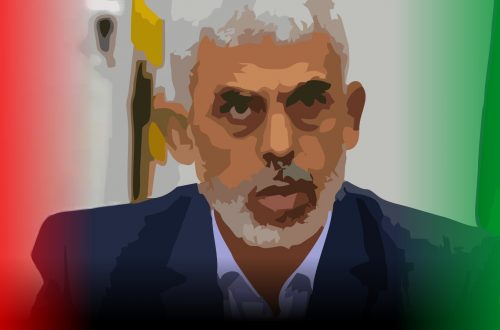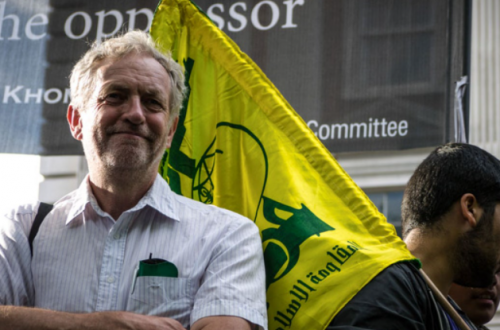This is an op ed by Shiraz Maher, in the Wall Street Journal
It is now clear that the failed terrorist attack by Umar Farouk Abdulmutallab on Christmas Day was directed by al Qaeda in the Arabian Peninsula (AQAP). The reasons for the sudden resurgence of this previously almost extinct chapter of the global jihad network lie not in Yemen, though—where AQAP is based—but across the border in Saudi Arabia.
For three years the Saudi Kingdom has been experimenting with a deradicalization program for captured Islamist terrorists in the CARE Rehabilitation Center. Rather than turning the jihadists into productive members of society, however, the center has replenished the terrorists’ troops by releasing some extremists who immediately rejoined al Qaeda. Unwilling to challenge their own brand of radical Islam, Wahhabism, the Saudis don’t seem ideologically best equipped to resocialize Islamist terrorists.
Located on the outskirts of Riyadh, it is not how you would imagine a typical Saudi prison, and indeed no one at the facility refers to it as such. Instead, the preferred term is “resort” and the inmates are called “beneficiaries.” In this laid-back atmosphere where inmates can take swimming lessons, play table-tennis, or enjoy video games, it is easy to forget the seriousness of their crimes.
Challenging the jihadis’ worldview at the Saudi rehabilitation center?
However this initiative is packaged, though, it is still a prison housing al-Qaeda fighters. Every Saudi detainee released from Guantanamo Bay passes through the Center before being released, alongside scores of domestic radicals.
Since its inauguration in 2007, the Center has attracted such a carousel of foreign visitors that it now has a purpose-built reception and exhibition tract. It has been of particular interest to intelligence officials from the United States, Britain, France and Germany. Some Western officials were so impressed with the facility that it helped accelerate the repatriation of Saudi detainees from Guantanamo Bay on the condition that they first passed through the CARE de-radicalization program on their return.
The triumphalism surrounding the center, however, came to an abrupt end last year when two of its graduates, Said Ali al-Shihri and Abu Hareth Muhammad al-Awfi, appeared in an al-Qaeda video.
“By Allah, imprisonment only increased our persistence in our principles for which we went out, did jihad for, and were imprisoned for,” Said al-Shihri declared. Statements from al Qaeda now identify him as the terror group’s deputy leader in the Arabian Peninsula. The Saudi government concedes that a total of 11 graduates from the Care Center have now returned to al Qaeda. That much was inevitable.
After visiting the deradicalization center in 2008, a retired senior official from Saudi intelligence told me that not everyone at the Center was a hardened jihadist. It also houses Arab nationalists whose sentiments boiled over during the allied invasion of Iraq.
Herein lies the problem. It was mainly these nationalist fighters who passed through the Care Center when it first opened. Yes, these men may have gone to Iraq motivated by a loathing of America and the West, but realizing al Qaeda’s worldview was not their primary motivation. Having never truly embraced jihadist aims, they represented an easy and early success for the architects of the Saudi initiative. These sort of nationalists were easily won over by the generous financial assistance offered by the government to repentant jihadists, including money for home refurbishments, new cars, wedding expenses and a monthly stipend of $700.
This sort of bakshish does not work with true believers, though, and identifying them was not difficult when I visited the facility in July 2008. During my trip I met Ahmad al-Shayea, who travelled to Iraq in 2003, then aged 19, and drove a truck-bomb to the Mansour district of Baghdad, which killed nine people and injured 60 outside the Jordanian embassy. The blast catapulted Ahmad al-Shayea from the vehicle, leaving him alive but with horrific burn injuries.
Sitting on the trimmed lawns of the Care Center’s gardens, he was one of the few who quoted from the Quran and explained why he felt obliged to fight what he regarded as the occupation of Muslim soil by infidels. He also seemed among the least repentant of the inmates I met there.
Aside from Saudi nationalists, many of those who initially passed through the Care Center appeared to have been al Qaeda foot soldiers, not leaders. The latter, who are usually hardened ideologues, are particularly resistant to change.
Of course, the Saudis accept they must challenge the jihadist worldview if rehabilitations are to succeed. To do so, they have created the rather Orwellian sounding “Ideological Security Unit.”
“You cannot defeat an ideology by force. You have to fight ideas with ideas,” its director, Abdul-Rahman Hadlaq told me.
The problem is that the Saudi program does not go far enough. It can’t. To do so would mean challenging the dangerous literalism of Wahhabism itself—the austere and regressive form of Islam that is the official state-sanctioned version of Islam in the Saudi Kingdom. Yet, it is that very doctrine that first inspired radical movements such as the Taliban and al Qaeda.
Instead, the Saudi authorities rely heavily on kindred approaches based on the tribal and patriarchal structure of Saudi society to reform detainees. The main emphasis is on keeping detainees busy. The government finds them jobs, spouses and encourages their families to keep them in line. That much was true for Juma al-Dossari, whose marriage was facilitated by the government after he returned from six years of incarceration in Guantanamo Bay.
“I have a great wife. She tells me to forget Guantanamo. She says: ‘Just forget it.’ She says: ‘You’re a new man. You have a new life. You have your family. Focus on that.’ That makes me feel much better,” he tells me.
Omar Ashour, an expert on deradicalization programs at Exeter University, thinks this approach will ultimately result in more recidivism. “The Egyptians tried something similar in the 1970s and failed,” he says. “The Saudi program is not comprehensive because it doesn’t address the wider issue of religious and ideological reformation. While it doesn’t do that, it can only offer a temporary panacea.”
It appears that as long as the Saudis fail to address the regressive literalism and intolerance of their own state religion—which fuels radical Islam around the world—they will also fail to rehabilitate true jihadis.
Mr. Maher is an associate fellow at the International Center for the Study of Radicalization, King’s College, London.


